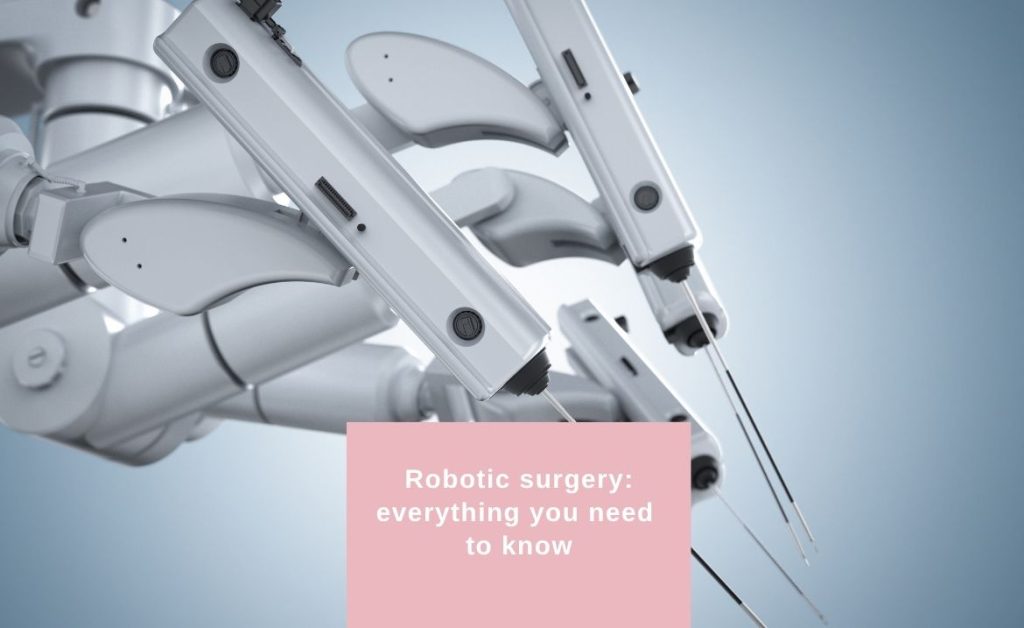Imagine walking into an operating room, not to find the typical crowd of gowned surgeons, but instead to see a sophisticated robot poised at the edge of the surgical table—Welcome to the world of robotic surgery, where science fiction has quietly merged with everyday medicine.
Robotic Surgery dates back to the 1980s, starting with assisting with holding patient limbs during operations and later being used for laparoscopic surgery. Since then, robotic-assisted surgery has exploded due to technological advancements.
As artificial intelligence (AI) evolves, so does the advancement of robotics. For instance, as of 2024, Australia has seen a rise in the number of robotic surgeries. But like any AI tool, you still need a human to make the decisions and moves.
So, without further ado, let’s answer some of the frequently asked questions and get a deeper insight into the world of robot-assisted surgeries.
A quick introduction to robotic surgery
You may have guessed it by now; robotic surgery is when your surgeon performs a medical procedure using robotic technology. Hence, the term – robotic surgery.
As we mentioned earlier, the robot is simply a tool. The steady hands and sharp eyes of a highly trained doctor expertly guide every move. It is the doctor who remains in control throughout the procedure.
The surgeon sits at a console a few feet away, hands moving in tandem with the robot’s precise, steady instruments. Through a high-definition 3D camera, the surgeon can see the surgical field as never before. Every nerve and vessel is magnified and illuminated. The robot’s arms, capable of rotating in ways a human wrist cannot, enable movements that are both fine and controlled. This level of precision and accuracy allows for better outcomes compared to certain traditional surgeries.
So, the next time you hear about robotic surgery, picture not a machine taking over, but a remarkable partnership—technology and human expertise coming together.
What is robotic surgery used for?
The answer is quite a lot. Here at Wollongong Obstetrics and Gynaecology, we use this technology for several gynaecological procedures, including:
- Hysterectomy (removal of the uterus)
- Oophorectomy (removal of the ovaries/cysts)
- Myomectomy (fibroid treatment)
- Endometriosis treatment
- Removal of adhesions (scar tissue) or cysts
- Treatment for ectopic pregnancy
Across Australia, you may also find it used for a variety of surgeries, including:
- Removal of tumours, and
- Certain cancers.
The benefits of robotic surgery
Along with innovation, sophistication, high levels of precision and accuracy, the software isn’t merely a fancy tool. The state-of-the-art technology allows you to benefit from
- Small incisions during surgery.
- Fewer risks of infections due to the smaller incisions.
- Faster and more comfortable recovery.
- Less pain.
- Quicker return to a daily routine.
Now, for one of the all-important frequently asked questions, what are the risks?
The potential risks
As with all medical procedures, robotic surgery has its challenges and is not suitable for every case. Some of the general risks of surgery are
- Excessive bleeding.
- Infection requiring antibiotic treatment.
- Abdominal infection.
- Breathing problems related to anaesthesia.
While your doctor will do everything to minimise risks, complications may occur.
Get professional advice today
While the use of AI to speed up work processes in day-to-day life can be so appealing, the thought of it being used to carry out a surgical treatment on you can feel daunting. The good news is that you don’t have to feel lost and confused. We’re here for you.
If you or someone you know is seeking advice on robotic surgery, contact us today.
Dr Kothari will thoroughly advise you on the side effects, advantages and disadvantages of treatment with robotic surgery. He will answer any questions you may have.
As the first and leading gynaecologist to use Da Vinci robotic-assisted techniques in Illawarra, Dr Kothari is an expert in the field, particularly in complex cases. Having performed over 500 Da Vinci robotic procedures to treat various conditions, you can rest assured that you are in good hands.

